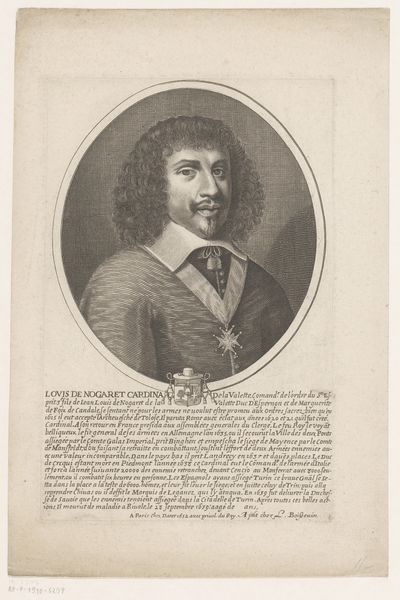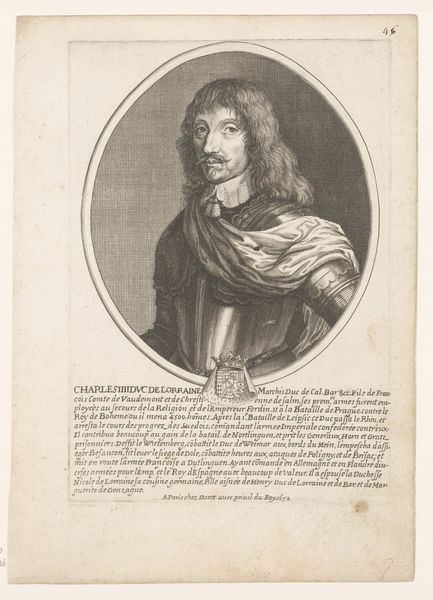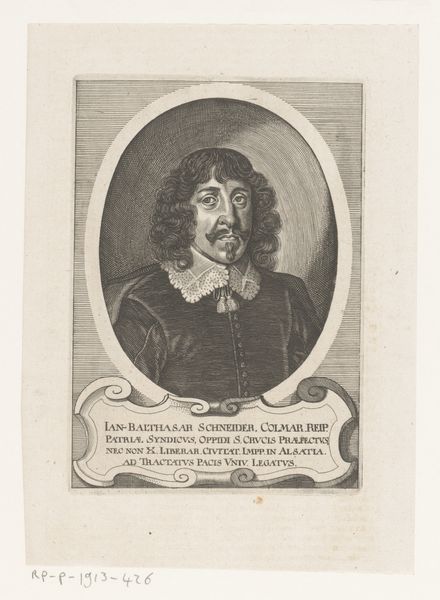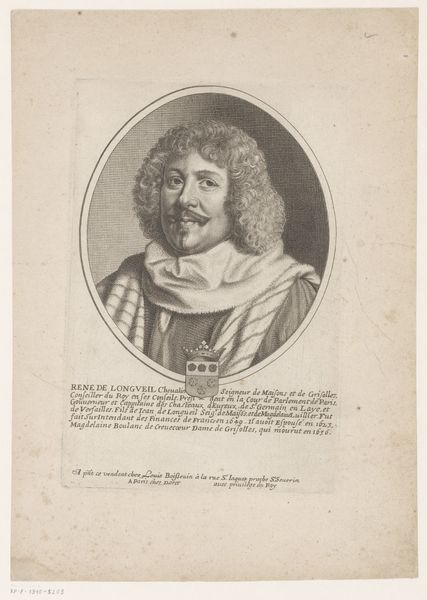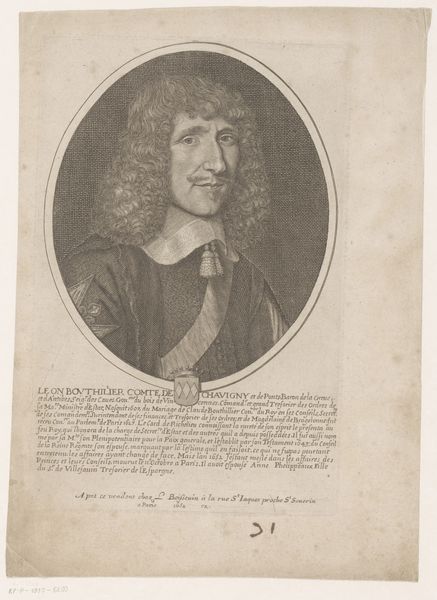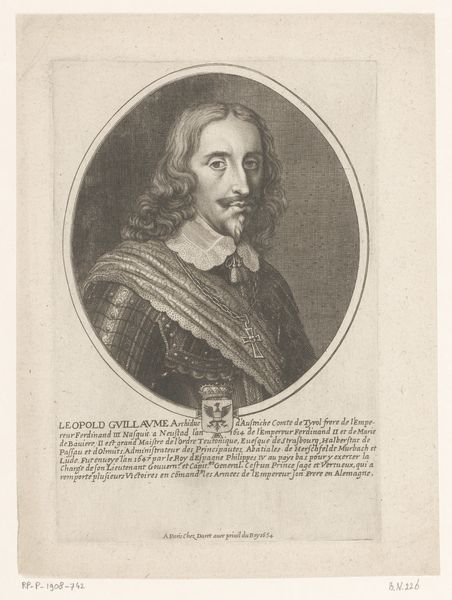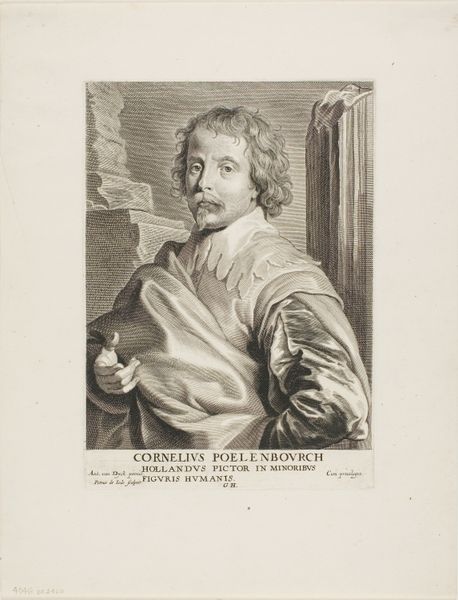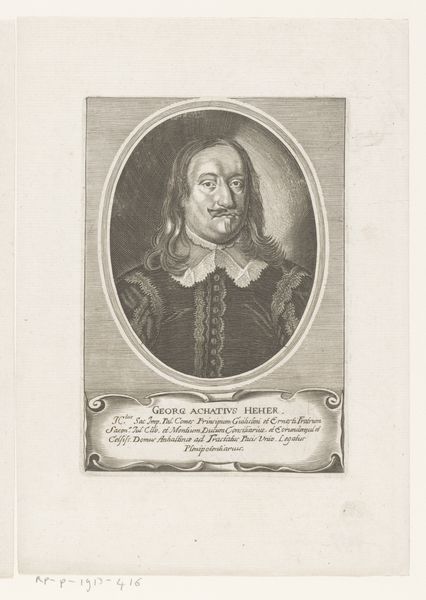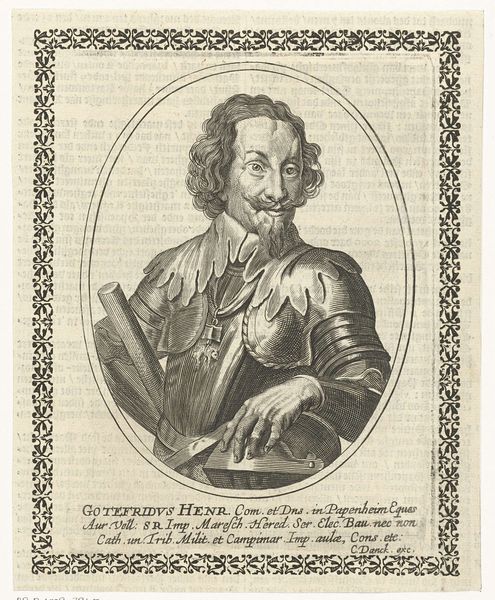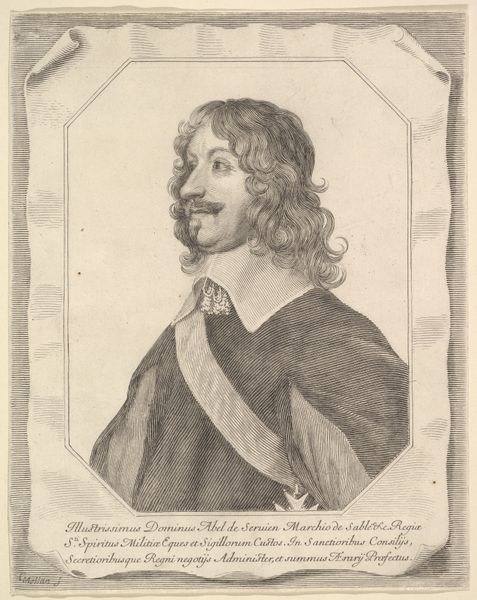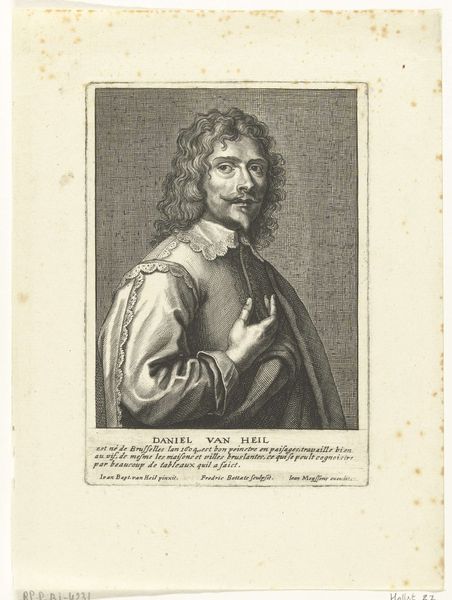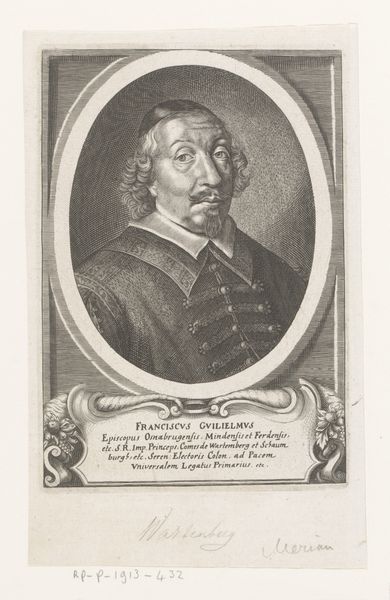
engraving
#
portrait
#
baroque
#
figuration
#
line
#
history-painting
#
engraving
Dimensions: height 192 mm, width 128 mm
Copyright: Rijks Museum: Open Domain
Editor: We're looking at "Portret van Nicolas de Neufville de Villeroy" made sometime between 1652 and 1656 by Pierre Daret. It’s an engraving, a medium that, even now, makes me think about the power of reproducible images. What does this portrait reveal to you? Curator: For me, it speaks volumes about the construction of power in the 17th century. Engravings like these weren't simply about capturing a likeness; they were carefully crafted statements designed to circulate within specific social and political spheres. The choice to depict Nicolas de Neufville in armor, within an oval frame resembling a classical cameo, is significant. Editor: So it's more than just a portrait? Curator: Exactly! It’s an assertion of status. Consider how Daret positions Nicolas de Neufville in relation to the monarchy. The inscription emphasizes his role as governor and "Gouverneur de la personne du Roy", which can be translated as 'governor of the person of the King'. The meticulous detailing in the armor, the family crest, all point to a deliberate crafting of an image meant to convey authority. These details emphasize his political relationships, don’t you think? Editor: That makes me wonder, who was this portrait for? Curator: Undoubtedly, the portrait served to reinforce de Neufville's status amongst his peers and those he governed. The distribution of such images, both within courtly circles and among the broader populace, would have been a vital part of maintaining his image. Also, let’s consider the politics embedded in patronage: by commissioning this work from Daret, Nicolas de Neufville participates in solidifying an intricate cultural economy where image and influence are entwined. Editor: Wow, so this seemingly simple portrait reveals a complex interplay of power, status, and politics. Curator: Precisely! By looking beyond the immediate image, we see how art was deployed in service of shaping perception and consolidating authority within its specific historical moment.
Comments
No comments
Be the first to comment and join the conversation on the ultimate creative platform.
